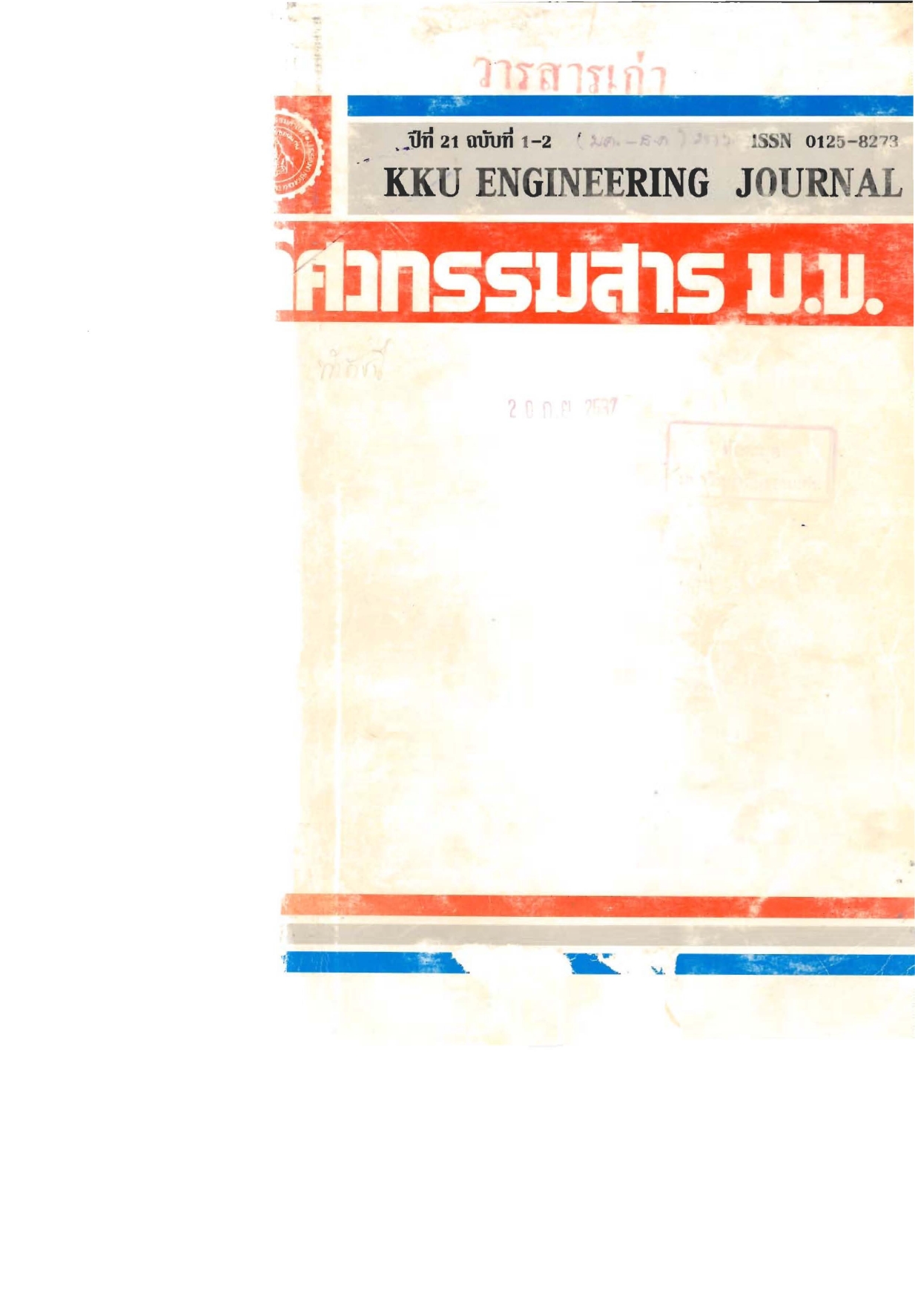Use of Coconut Husk Ash, Com Cob Ash and Peanut Shell Ash as Pozzolana
Main Article Content
Abstract
This research is conducted to develop new kinds of pozzolana from other
agricultural wastes apart from rice husk and rice straw. The study investigated the use of
coconut husk. corn cob and peanut shell ash as pozzolana. A series of experiments were
conducted to determine the properties of coconut hush ash, corn cob ash and peanut
shell ash which are referred here as CHA. CCA and PSA respectively, and the properties
of paste and mortar having a certain percent replacement of cement by these ashes. The
properties of CHA. CCA and PSA namely specific gravity, fineness, chemical composition
and the strength activity index with Portland cement were determined. For properties of
paste, only ordinary Portland cement and 30% PSA were investigated for normal
COnsistency and initial and final setting time. To determine the compressive strength,
truee mixes were cast for CHA having a percent replacement of 0, 35 and 50 percent and
four mixes were cast for both CCA and PSA haVing a percent replacement of 0, 20, 30 and
40 percent. Ordinary Portland cement Type I was used and water content was controlled
to have a flow of 105-115% for all mortars. To investigate the influence of water to
cementitious material ratio, four mixes were made to determine the optimum water
content. Four kinds of mortar namely ordinary Portland cement, rice husk ash, CCA andPSA were also tested for sulphate and acidic attacks.
Experimental results revealed that coconut husk ash cannot be utilized as
pozzolana while CCA and PSA can be classified as F and N pozzolana respectively. CCA
mortars have lower compressive strength than the controlled mortar (0% CCA) while PSA
mortars showed higher compressive strength than the controlled mortar (0% PSA).
Among the four mortars tested for chemical attack, PSA mortars showed higher resistance
against sulphate attach and RHA against acidic attack.
agricultural wastes apart from rice husk and rice straw. The study investigated the use of
coconut husk. corn cob and peanut shell ash as pozzolana. A series of experiments were
conducted to determine the properties of coconut hush ash, corn cob ash and peanut
shell ash which are referred here as CHA. CCA and PSA respectively, and the properties
of paste and mortar having a certain percent replacement of cement by these ashes. The
properties of CHA. CCA and PSA namely specific gravity, fineness, chemical composition
and the strength activity index with Portland cement were determined. For properties of
paste, only ordinary Portland cement and 30% PSA were investigated for normal
COnsistency and initial and final setting time. To determine the compressive strength,
truee mixes were cast for CHA having a percent replacement of 0, 35 and 50 percent and
four mixes were cast for both CCA and PSA haVing a percent replacement of 0, 20, 30 and
40 percent. Ordinary Portland cement Type I was used and water content was controlled
to have a flow of 105-115% for all mortars. To investigate the influence of water to
cementitious material ratio, four mixes were made to determine the optimum water
content. Four kinds of mortar namely ordinary Portland cement, rice husk ash, CCA andPSA were also tested for sulphate and acidic attacks.
Experimental results revealed that coconut husk ash cannot be utilized as
pozzolana while CCA and PSA can be classified as F and N pozzolana respectively. CCA
mortars have lower compressive strength than the controlled mortar (0% CCA) while PSA
mortars showed higher compressive strength than the controlled mortar (0% PSA).
Among the four mortars tested for chemical attack, PSA mortars showed higher resistance
against sulphate attach and RHA against acidic attack.
Article Details
How to Cite
Cbatveera, B., & NtmJtyonglkul, P. (2013). Use of Coconut Husk Ash, Com Cob Ash and Peanut Shell Ash as Pozzolana. Engineering and Applied Science Research, 22(2), 1–20. retrieved from https://ph01.tci-thaijo.org/index.php/easr/article/view/8122
Issue
Section
ORIGINAL RESEARCH
This work is licensed under a Creative Commons Attribution-NonCommercial-NoDerivatives 4.0 International License.



